https://libapps.libraries.uc.edu/liblog/wp-content/uploads/2021/10/Movie-night-Griffin-Warrior.pdf
Video from “Halloween Movie Night.”
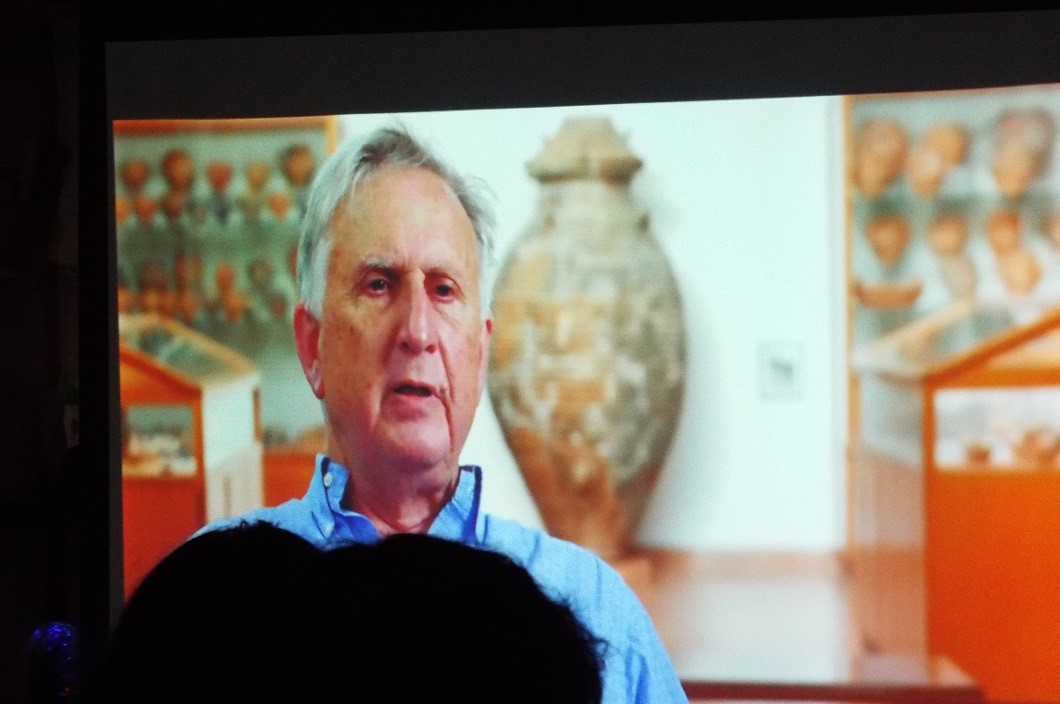
In spite of jet lag from having arrived from Greece the day before, Professor Davis not only introduced the excavation and movie, but also stayed on to answer questions after the documentary. The captive audience learned that the discovery of the “Tomb of the Griffin Warrior,” a discovery of a lifetime, came about as many great historical discoveries often do, partly through chance after having been denied a permit for a chosen excavation spot and instead been given permission to dig in a neighboring olive grove where three stones appearing on the surface seemed to indicate a structure. Well, a team lead by Jack Davis and Shari Stocker, UC, struck gold, quite literally in the form of some spectacular gold rings of Minoan origin, depicting religious scenes, a possible “rite of passage” by a seaside sanctuary, a bull leaper, and other suggestive imagery discovered inside a virtually intact grave filled with many riches, pointing to the importance of its occupant as did the shaft type grave with one burial, not the common beehive one which usually contained multiple burials. The object which has received the most attention, though, is a seal stone depicting a warrior scene. The documentary speculated that the scene depicts the Griffin Warrior himself in combat, pointing to a similar sword and necklace found in the tomb as well as a comb that may reference the generous locks of one of the warriors in the image. The possible Minoan depiction of a Mycenaean could point to greater respect for the Minoans and their religion by the Mycenaean conqueror, a desire to emulate the Minoans, including their religious practices, symbolic objects, and employing a Minoan artist to create the scene on the seal otherwise unique and not matching other imagery in Minoan art, thus most likely not created on Crete, although the execution is unmistakably Minoan, rather than the hitherto prevailing theory that the Mycenaeans viciously subdued and looted the weakened Minoans who after more than a century of probable famine and severely affected trade were no longer capable of defending themselves. This as a consequence of the volcanic eruption on Thera a couple of centuries earlier with subsequent earthquakes and tsunami, which must have destroyed much of the crop and fleet and killed many Minoans, creating so much destruction that they were unable to fully revive their advanced civilization, and eventually fell prey to invaders. The “Tomb of the Griffin Warrior” has brought doubt and nuance to that notion and upended the canon of more than a century of classical scholarship.
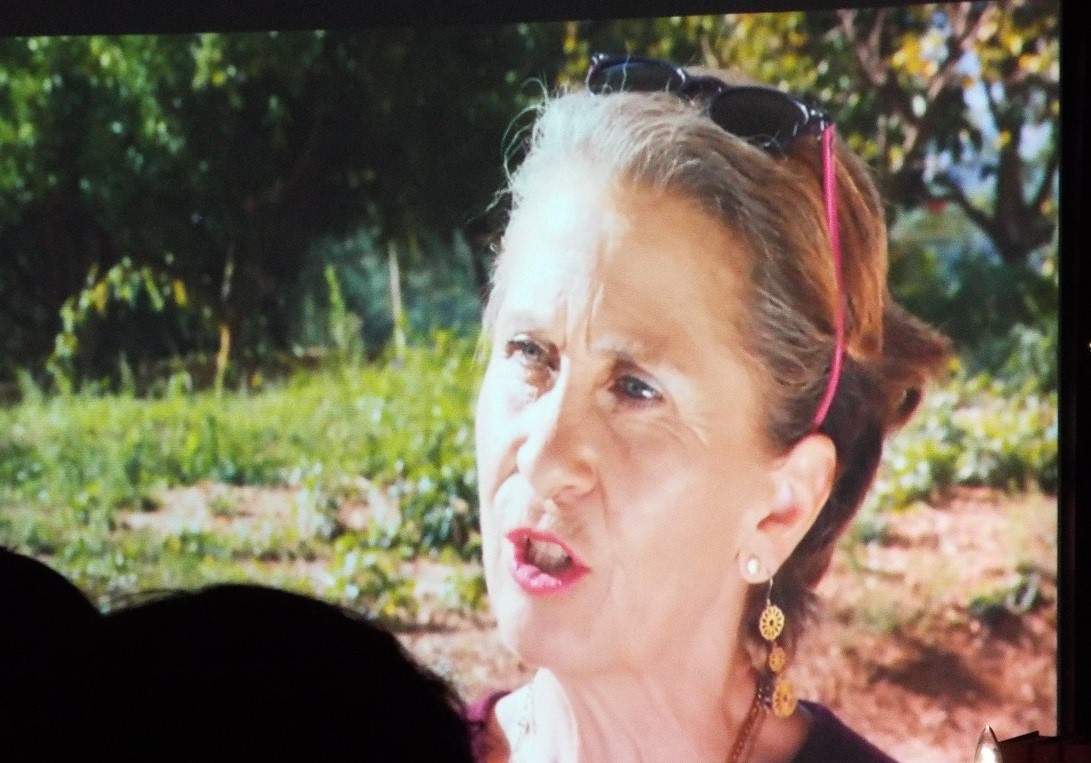
Sharon Stocker, world-renowned UC archaeologist, from the Smithsonian Cable documentary.
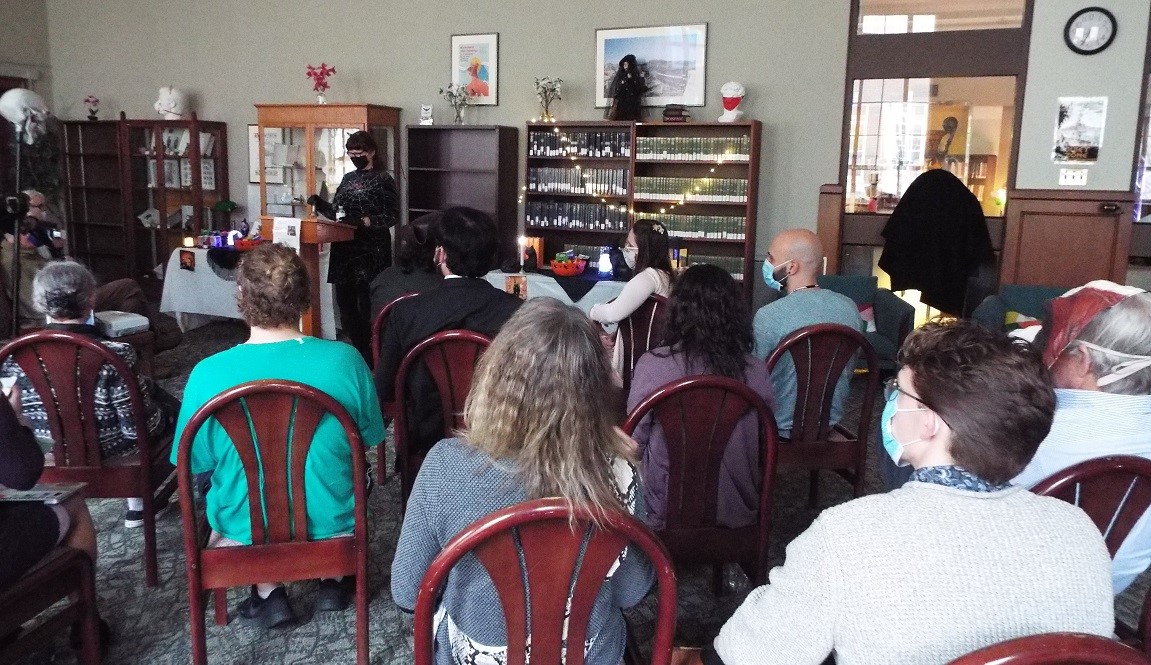
A full house for Movie Night in the Classics Library.
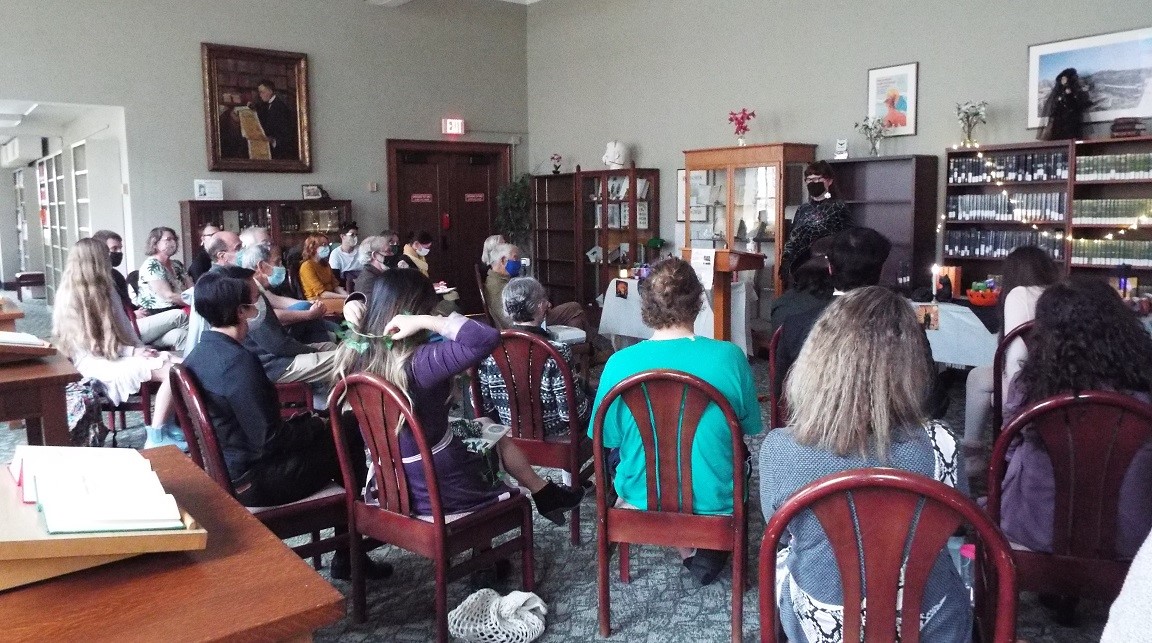
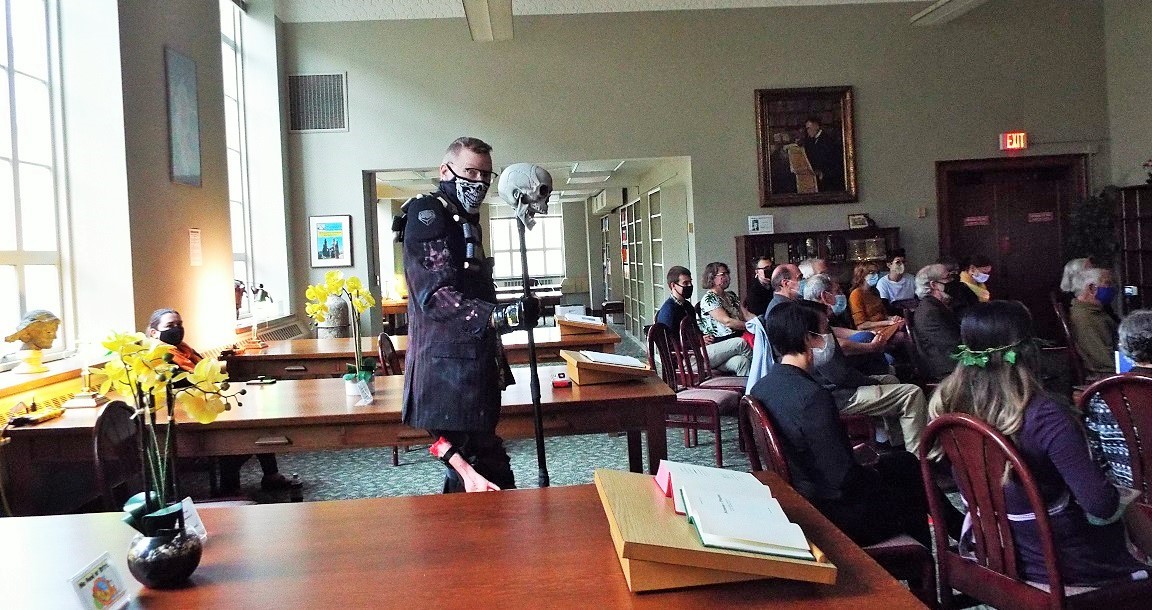
Video master Jay Sinnard as Death.
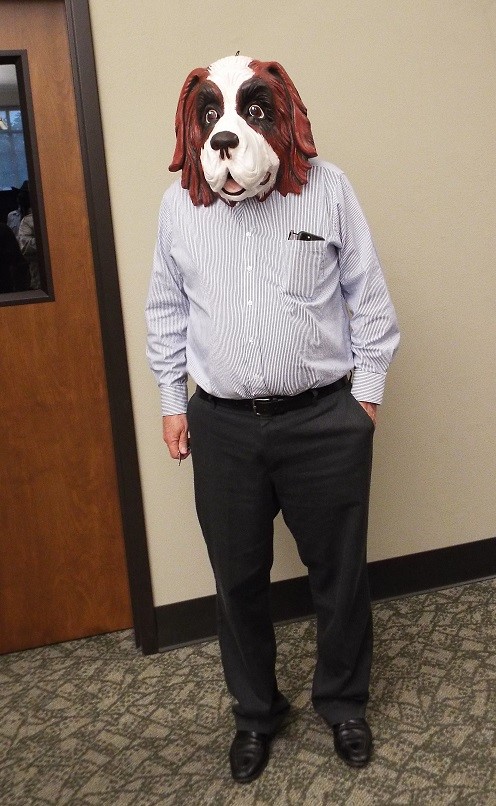
The Chair of the UC Classics Department. The mask was made for Professor Davis by the same mask maker who made the masks in Venice for Kubrick’s Eyes Wide Shut.
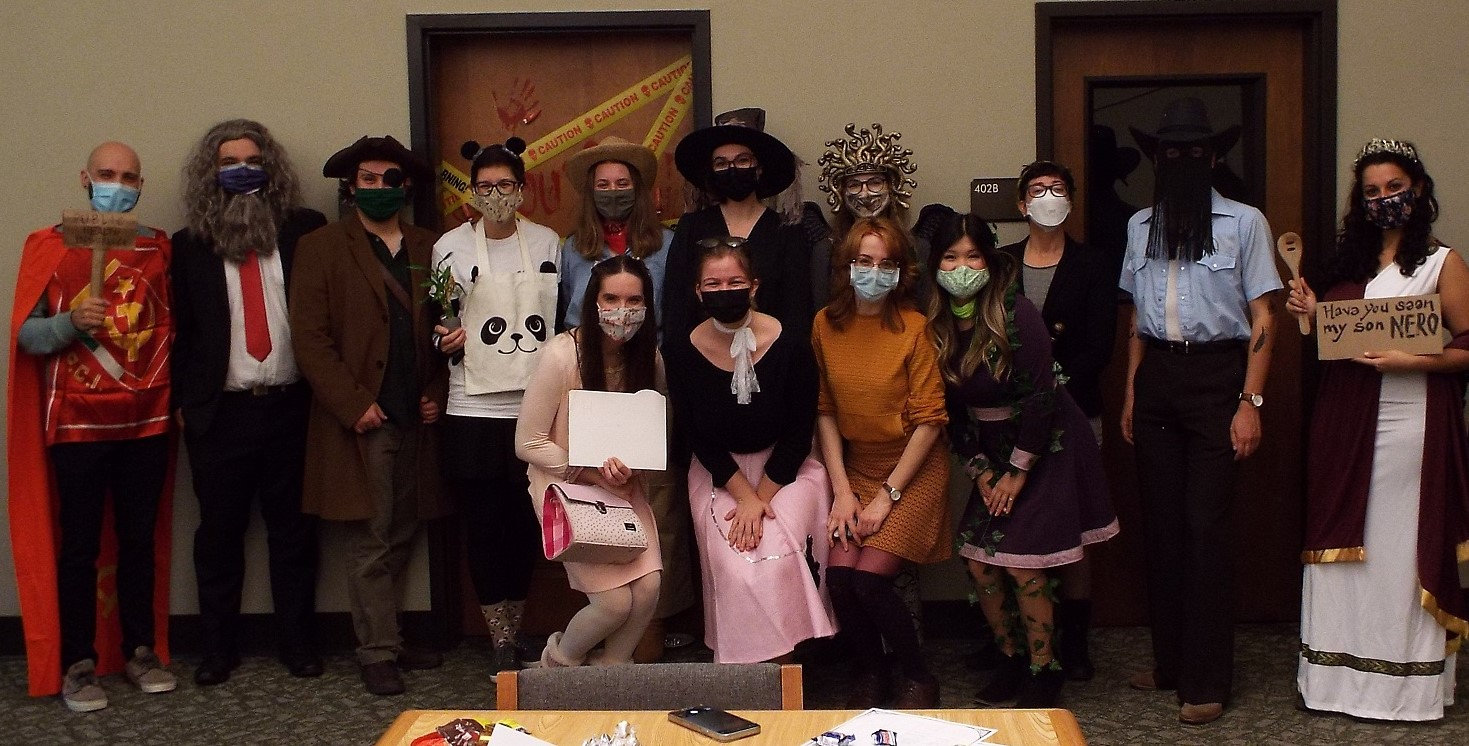
UC graduate students in Classics, Halloween 2021.
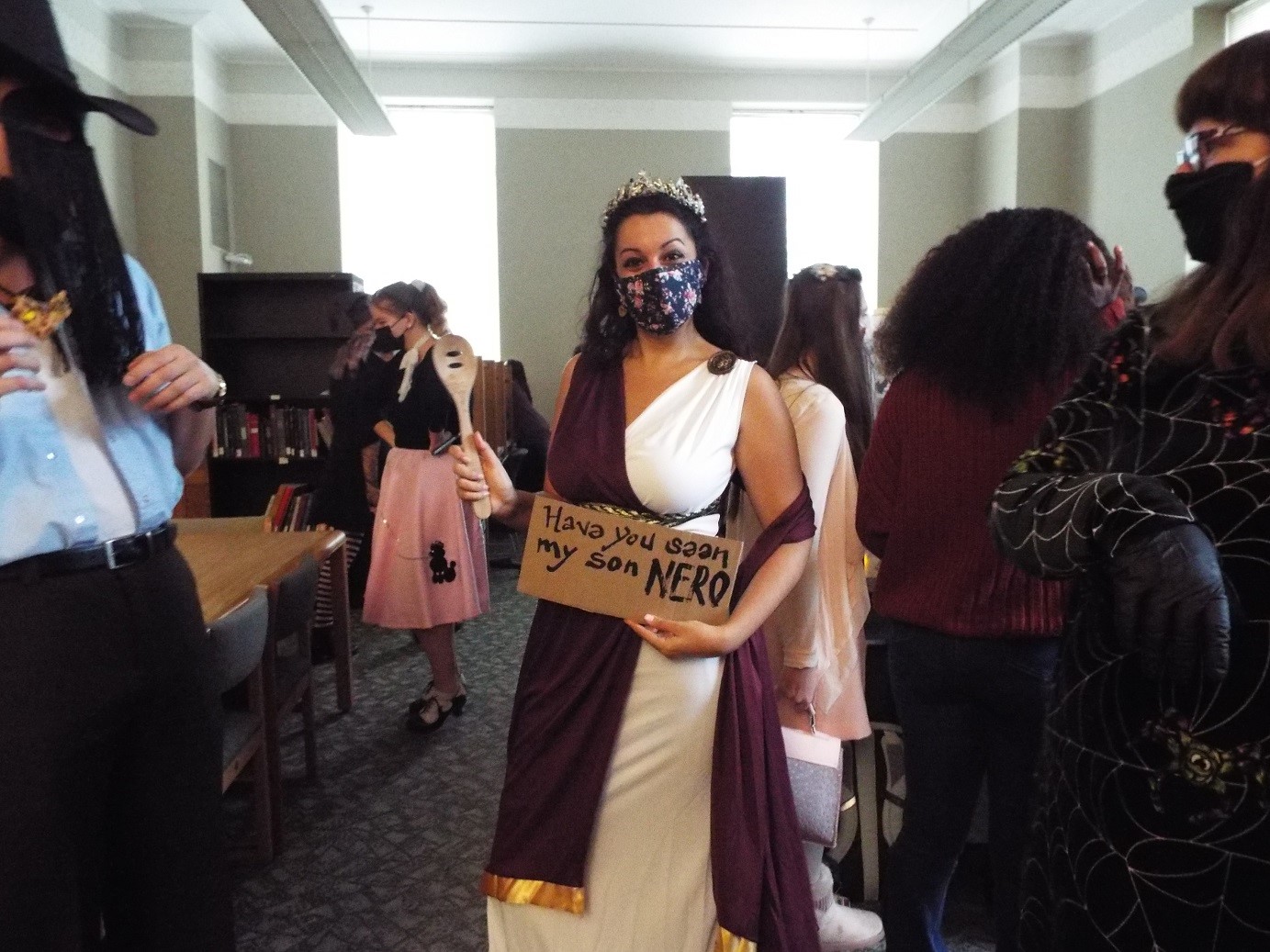
Agrippina the Younger, Mother of Emperor Nero.

Daphne in the state of transformation.
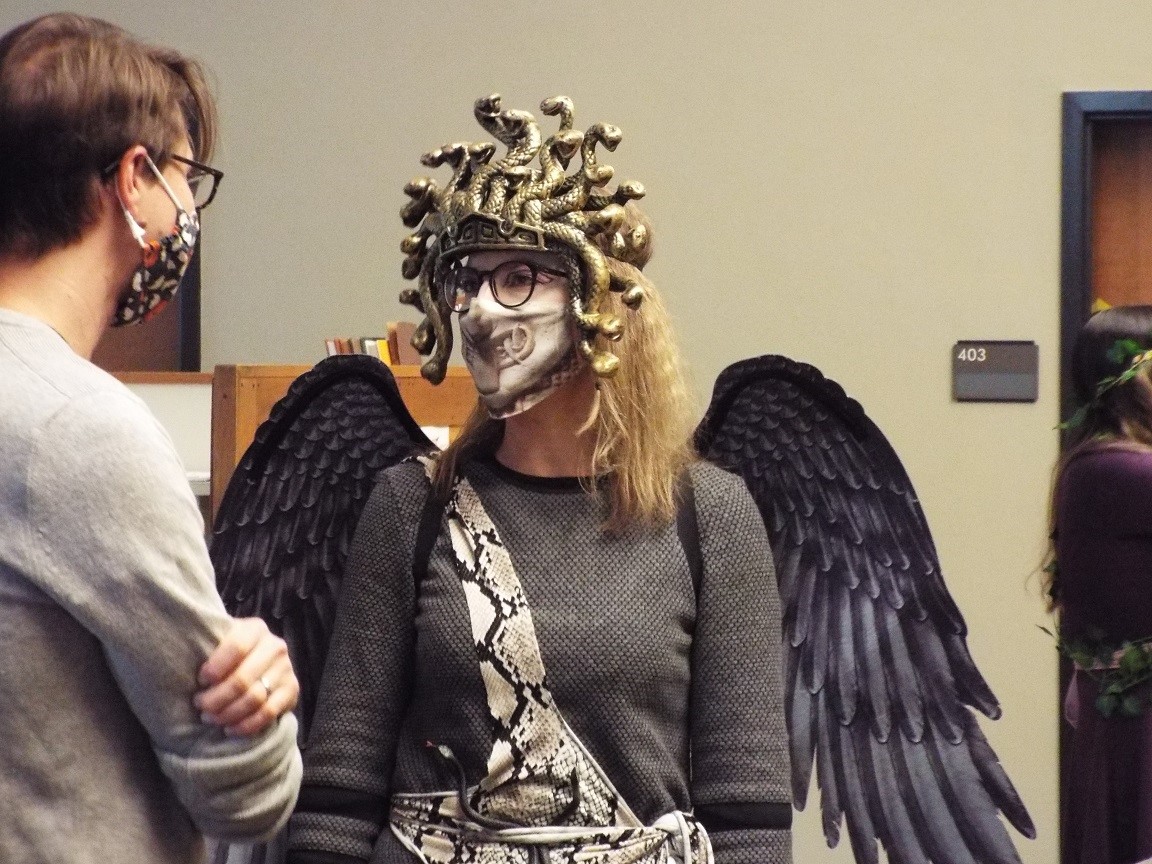
Medusa.
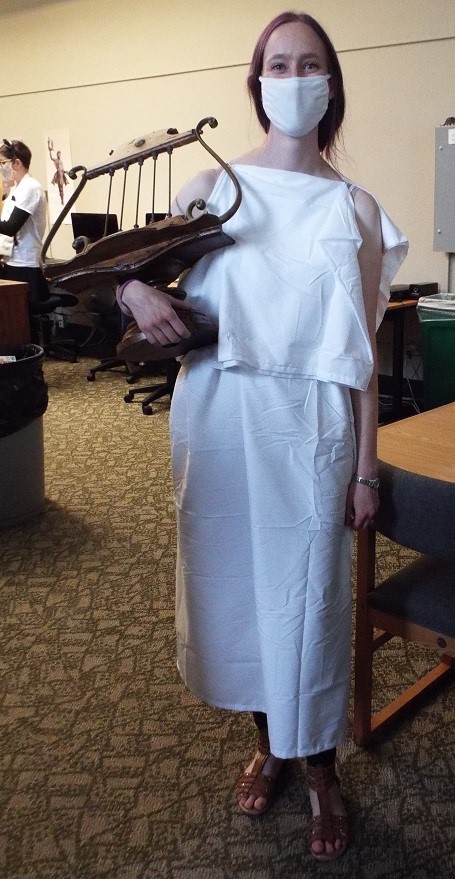
Sappho.
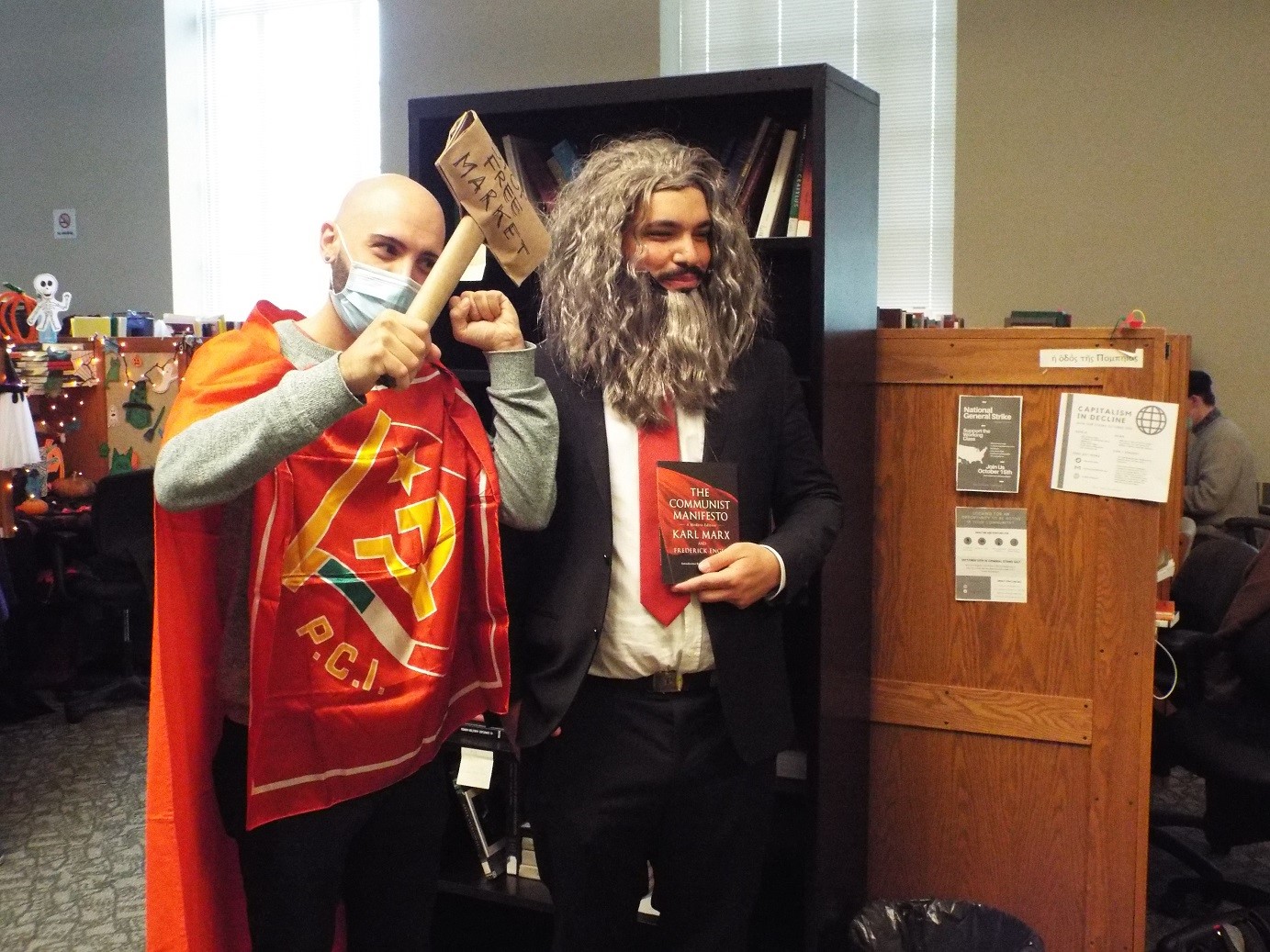
End to Capitalism. A Soviet style Bolshevik and Karl Marx himself.

A horrifying scene on the door to one of the Tytus, currently Fulbright, fellows’ offices with body parts and police tape.

Halloween competition among the grad students and their carrels.
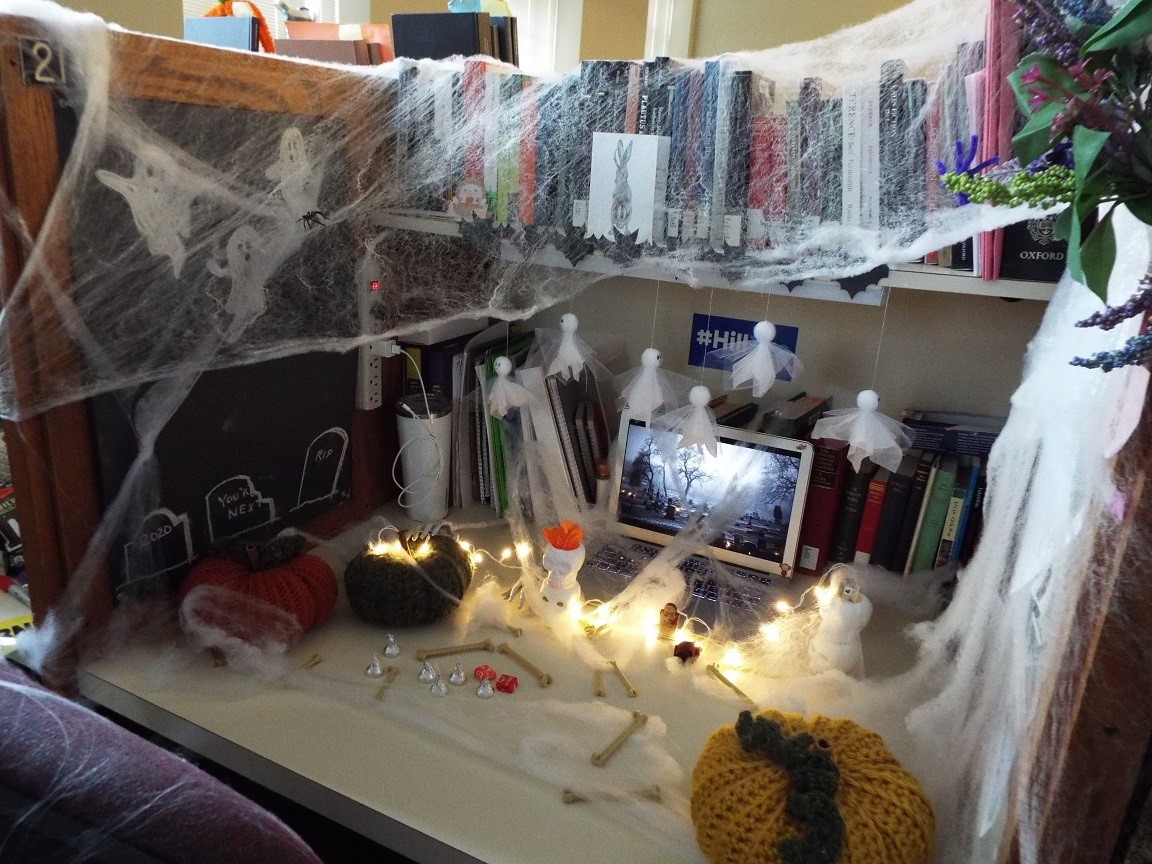
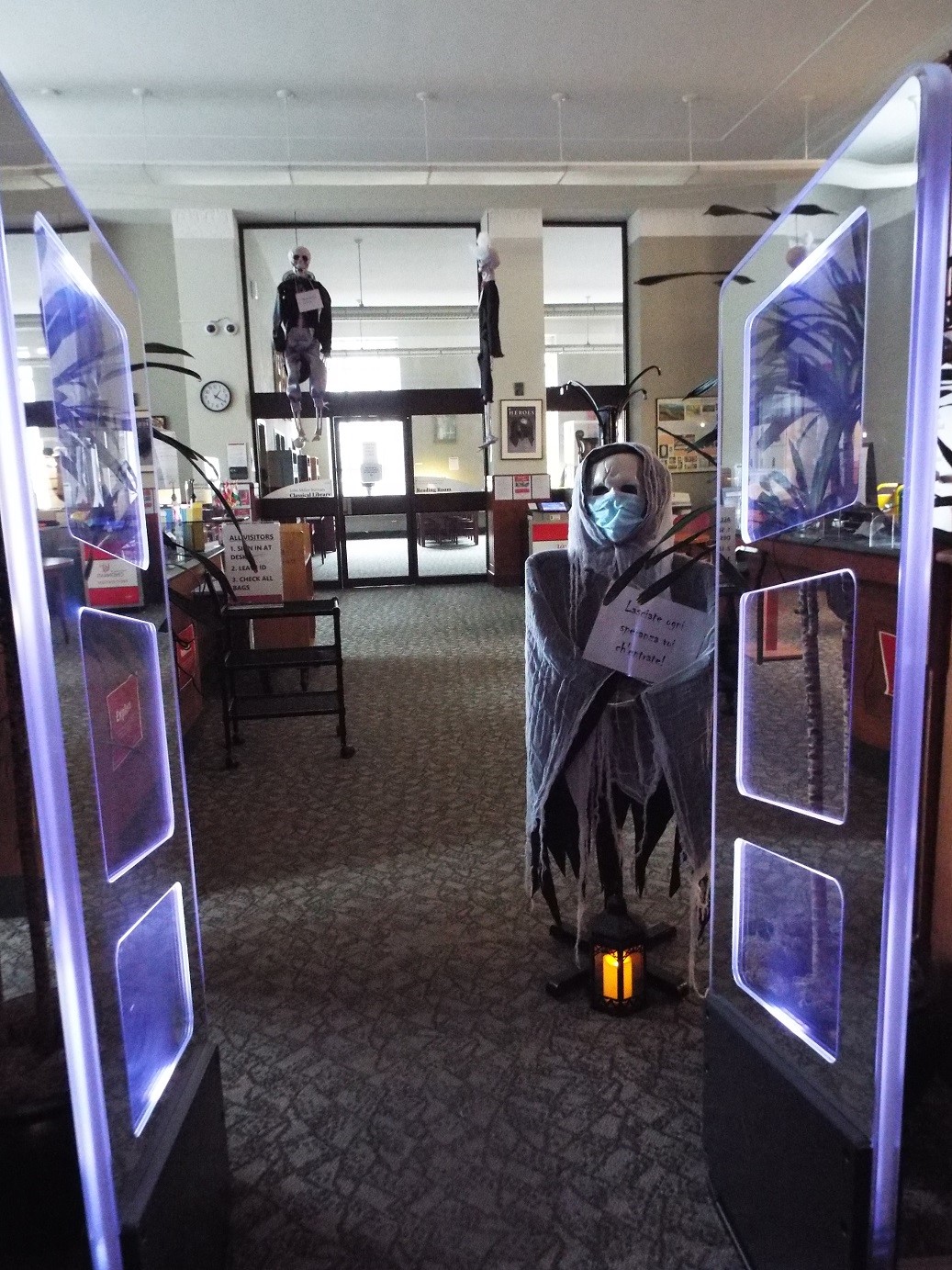
Welcome to Movie Night and Halloween in the Classics Library, October 29, 2021.
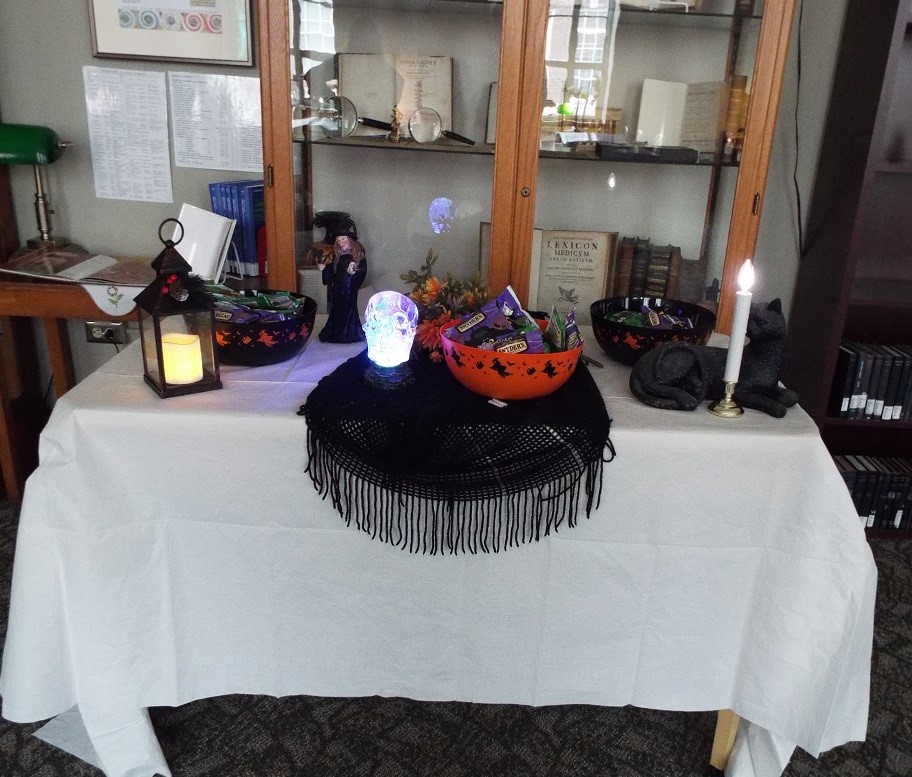
The Reading Room decked out for Halloween and Movie Night.

Come again if you dare…
